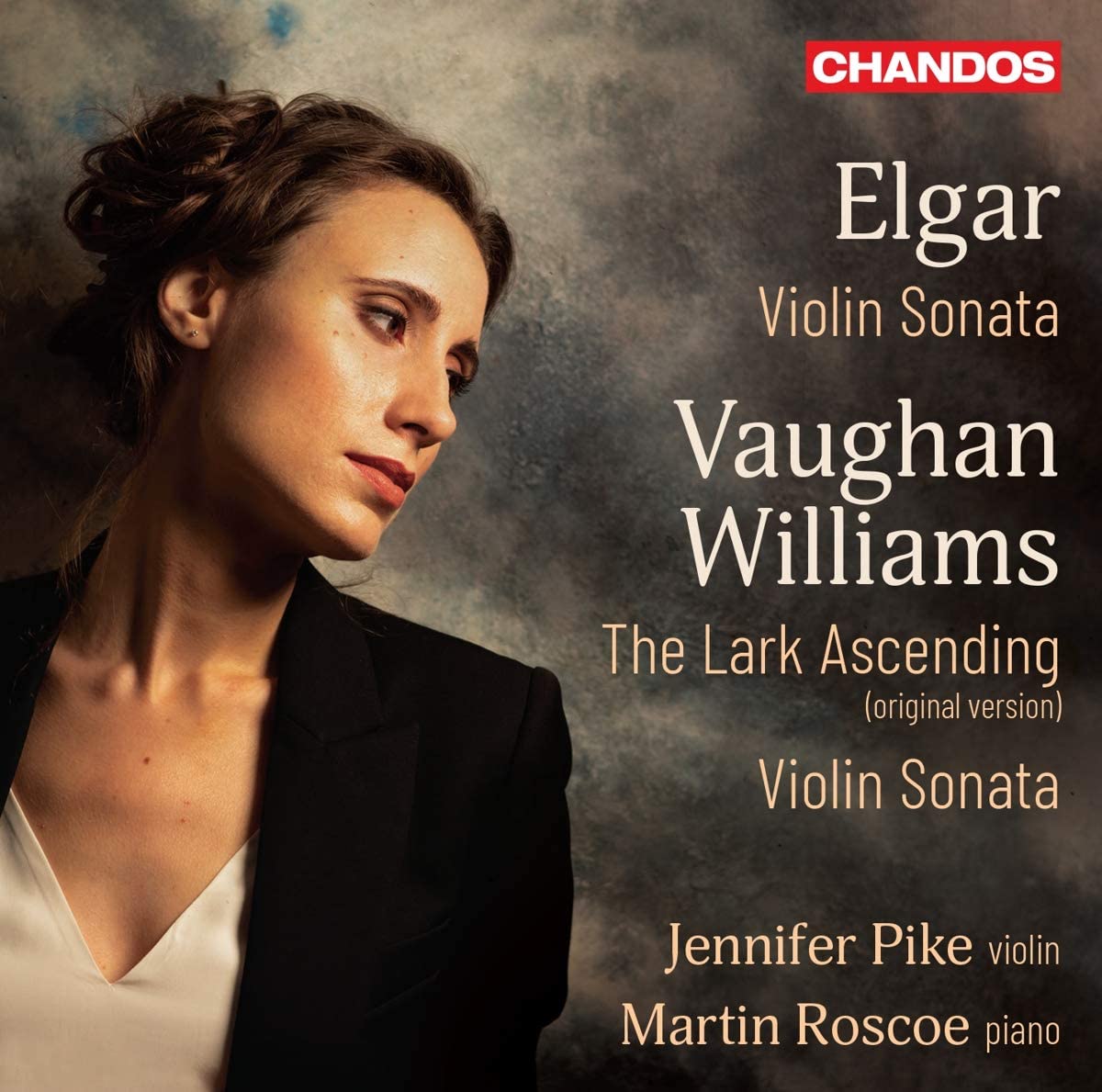ELGAR; VAUGHAN WILLIAMS Violin Sonatas (Jennifer Pike)
View record and artist detailsRecord and Artist Details
Genre:
Chamber
Label: Chandos
Magazine Review Date: 09/2020
Media Format: CD or Download
Media Runtime: 67
Mastering:
DDD
Catalogue Number: CHAN20156

Tracks:
| Composition | Artist Credit |
|---|---|
| Sonata for Violin and Piano |
Edward Elgar, Composer
Jennifer Pike, Violin Martin Roscoe, Piano |
| (The) Lark ascending |
Ralph Vaughan Williams, Composer
Jennifer Pike, Violin Martin Roscoe, Piano |
Author: Jeremy Dibble
Reviewing some 30 recordings of Elgar’s Violin Sonata in E minor for a Gramophone Collection in January 2016, it was eye-opening to behold the considerable variety of interpretations of this rather unconventional work – especially the rhapsodic first movement with its plethora of thematic ideas and its peculiar tonal dynamic (which veers as much towards A minor as it does towards E). Jennifer Pike’s individual reading of the first movement is one of well-defined character elements: drama for the first subject (which begins in A minor) and a spellbinding tranquillity for the main secondary idea (in which the articulation across the strings is beautifully executed) – which culminates in an imposing climax in the last two pages. The exotic Romance is delicate and refined, though a little more portamento might have added to the ‘big’ central tune. Pike is at her best, as I hear it, in the finale, where her tone is more fulsome and which seems to combine more stylishly with the orchestral piano part when it comes to the fore as a grand tutti statement in the recapitulation.
Pike seems very much at home in the modal world of Vaughan Williams’s late Violin Sonata in A minor (1954), and she and Martin Roscoe negotiate the imaginative Fantasia structure of the first movement with verve and vigour. The intonation of the multiple-stopping is well-nigh flawless and the execution of the long melodic passages is carefully balanced and nuanced. The more neoclassical Scherzo has much of that devilish momentum that looks back to Job and the Fourth Symphony; but it was from the even earlier Piano Quintet of 1903 that the composer drew his thematic material for the series of six variations. These, like the splendid variations of the Eighth Symphony, are captivating as individual movements and as a cumulative structure, especially in the way the final variation merges with a memory of the first-movement Fantasia in a glowing A major conclusion.
It is also good to be reminded that the original version of The Lark Ascending, premiered by Marie Hall and Geoffrey Mendham in 1920, was conceived as a chamber work for violin and piano rather than the more symphonic canvas we now take for granted in its orchestral garb. Some things I acutely missed in this version – the sustained orchestral chord, for example, in the opening violin cadenza, the legerdemain of the triangle, woodwind and divided strings of the Scherzo passage and the general weight of the orchestral sonority at the reprise of the pastoral material – but that is not to say that there is not a special intimacy in this ‘clean’, less adorned account of the composer’s thoughts. Pike and Roscoe, moreover, point up its many expressive and elegiac merits.
Discover the world's largest classical music catalogue with Presto Music.

Gramophone Digital Club
- Digital Edition
- Digital Archive
- Reviews Database
- Full website access
From £8.75 / month
Subscribe
Gramophone Full Club
- Print Edition
- Digital Edition
- Digital Archive
- Reviews Database
- Full website access
From £11.00 / month
Subscribe
If you are a library, university or other organisation that would be interested in an institutional subscription to Gramophone please click here for further information.




